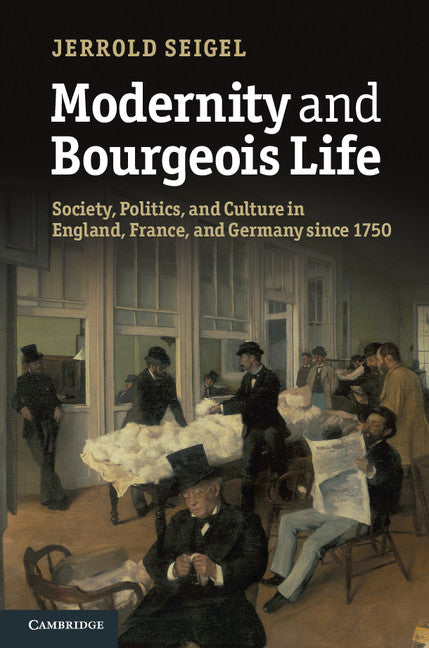Freshly Printed - allow 6 days lead
Couldn't load pickup availability
Modernity and Bourgeois Life
Society, Politics, and Culture in England, France and Germany since 1750
What does it mean to be modern? Jerrold Seigel offers a magisterial account of the development of European modernity.
Jerrold Seigel (Author)
9781107018105, Cambridge University Press
Hardback, published 12 April 2012
638 pages, 10 b/w illus.
23.4 x 15.6 x 3.2 cm, 1.12 kg
'In this masterful interpretation of modern European history, Seigel … persuasively and lucidly argues that the essence of change has been the growth and transformation of the bourgeoisie … This work belongs in every academic library; it also deserves to be taken off the shelves and read by all students of European history. Uncommonly good. Summing up: highly recommended.' Choice
To be modern may mean many different things, but for nineteenth-century Europeans 'modernity' suggested a new form of life in which bourgeois activities, people, attitudes and values all played key roles. Jerrold Seigel's panoramic new history offers a magisterial and highly original account of the ties between modernity and bourgeois life, arguing that they can be best understood not in terms of the rise and fall of social classes, but as features of a common participation in expanding and thickening 'networks of means' that linked together distant energies and resources across economic, political and cultural life. Exploring the different configurations of these networks in England, France and Germany, he shows how their patterns gave rise to distinctive forms of modernity in each country and shaped the rhythm and nature of change across spheres as diverse as politics, money and finance, gender relations, morality, and literary, artistic and musical life.
Preface
1. Introduction: ends and means
Part I. Contours of Modernity: 2. Precocious integration: England
3. Monarchical centralization, privilege, and conflict: France
4. Localism, state-building, and bürgerliche gesellschaft: Germany
5. Modern industry, class, and party politics in nineteenth-century England
6. France and bourgeois France: from teleocracy to autonomy
7. One special path: modern industry, politics, and bourgeois life in Germany
Part II. Calculations and Lifeworlds: 8. Time, money, capital
9. Men and women
10. Bourgeois morals: from Victorianism to modern sexuality
11. Jews as bourgeois and network people
Part III. A Culture of Means: 12. Public places, private spaces
13. Bourgeois and others
14. Bourgeois life and the avant-garde
15. Conclusion.
Subject Areas: History of ideas [JFCX], Modern history to 20th century: c 1700 to c 1900 [HBLL], European history [HBJD]


